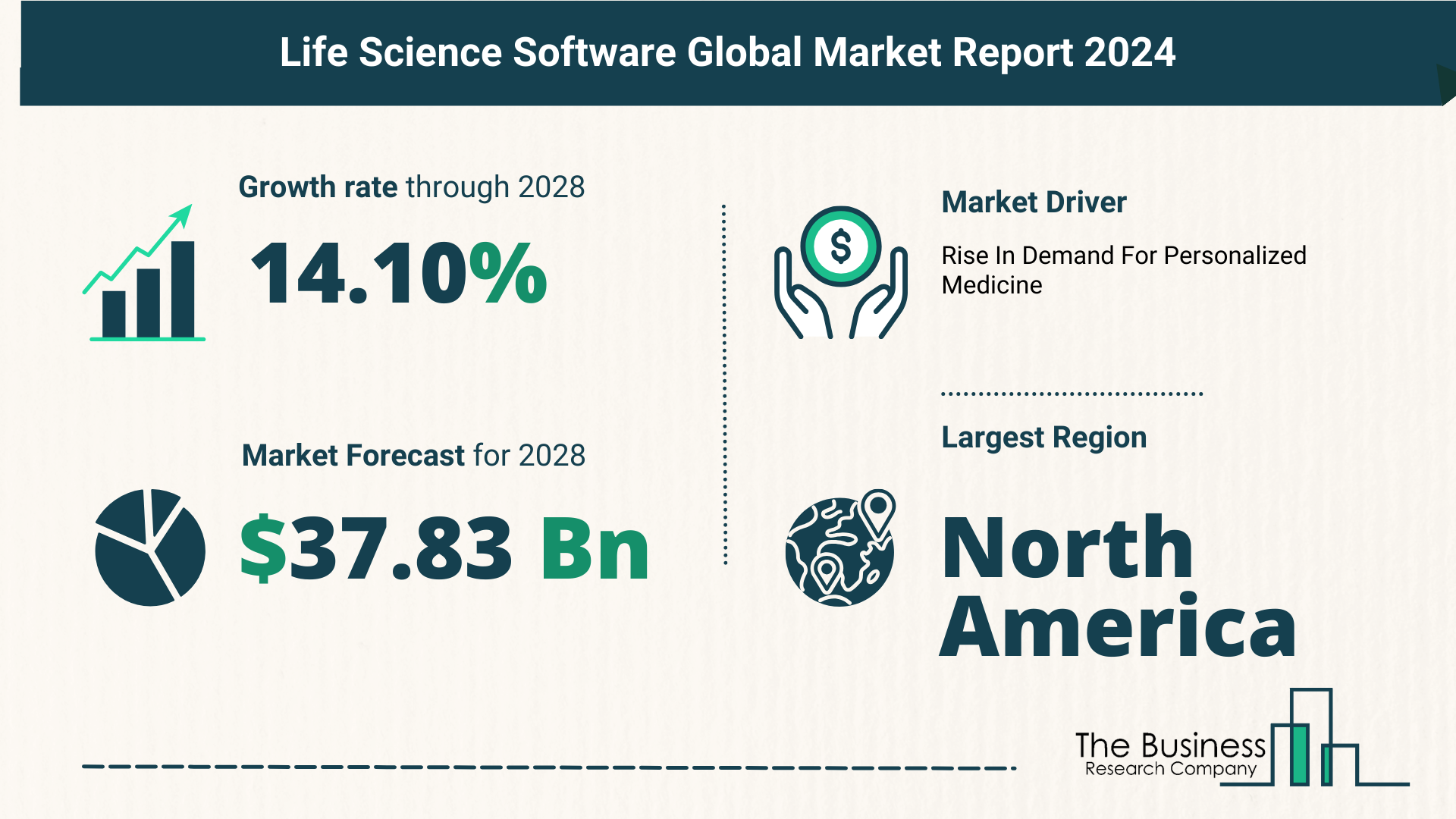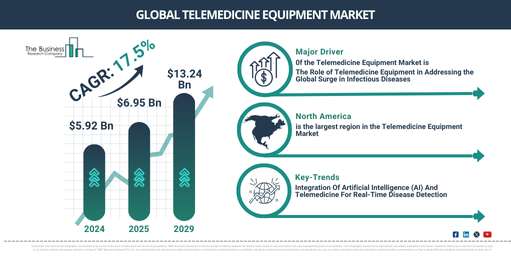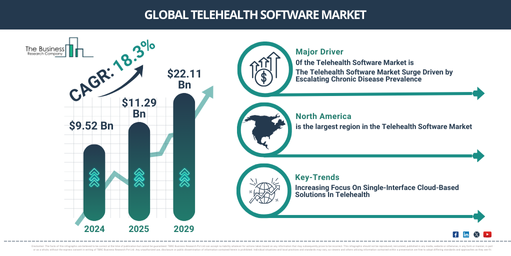Key Trends And Drivers In The Life Science Software Market 2024
The Business Research Company’s market reports offer an in-depth analysis on the market’s growth potential, major drivers, key trends and more.
The life science software market has experienced significant growth, driven by a confluence of factors including regulatory demands, data integration needs, and the expanding scope of personalized medicine. Let’s delve into the dynamics shaping this burgeoning sector.
Market Growth and Projections
- The market size grew from $19.45 billion in 2023 to $22.31 billion in 2024, with a CAGR of 14.7%.
- Forecasted to reach $37.83 billion by 2028, growing at a CAGR of 14.1%.
- Drivers include regulatory compliance, data management needs, globalization of clinical trials, and personalized medicine.
Rising Demand for Personalized Medicine Propels Market Expansion
The increasing adoption of personalized medicine stands as a pivotal driver for the life science software market. This approach tailors healthcare decisions and treatments to individual patient characteristics, necessitating advanced software solutions for data integration and analysis.
- Personalized medicine leverages genetic testing, wearables, and electronic health records.
- Facilitates tailored treatment plans based on individual genetic and lifestyle factors.
- Growth in genetic testing products and personalized medicines underscores market demand.
Read More On The Life Science Software Market Report 2024 – https://www.thebusinessresearchcompany.com/report/life-science-software-global-market-report
Integration of Advanced Technologies
Major players are integrating cutting-edge technologies like AI and ML to enhance efficiency across various applications, from drug discovery to clinical trials.
- Generative AI designs molecular structures; ML analyzes vast datasets for drug discovery.
- Examples like Merck’s AIDDISON highlight AI’s role in accelerating drug development.
- Improves efficacy and speeds up identification of novel medications.
Strategic Moves and Market Developments
Strategic acquisitions and expansions further drive market growth and innovation, as seen with PerkinElmer’s acquisition of BioLegend in 2021.
- Aimed at enhancing capabilities in therapeutics discovery and development.
- Highlights the importance of strategic alliances in advancing life science software.
Segmentation and Regional Insights
The market segmentation by type, deployment, application, and end-user provides insights into diverse market dynamics and regional trends.
- Types include predictive, descriptive, and prescriptive software solutions.
- Deployments range from on-premise to hosted solutions.
- Applications span marketing, compliance, R&D, pharmacovigilance, and supply chain management.
- North America leads, while Asia-Pacific shows the fastest growth potential.
Future Outlook and Trends
Looking ahead, several key trends will shape the future of the life science software market, driving continued innovation and adoption.
- Continued technological advancements in AI, ML, and cloud computing.
- Accelerated digital transformation across healthcare and pharmaceutical sectors.
- Increasing collaboration and networking among industry players.
- Growing investment in research and development activities.
- Advancements in technology to meet evolving regulatory and compliance requirements.
Conclusion
The life science software market is on an upward trajectory, fueled by technological innovation, increasing demand for personalized medicine, and strategic industry collaborations. As the market expands, leveraging advanced technologies will be crucial for stakeholders aiming to enhance efficiency, accelerate drug discovery, and meet regulatory demands effectively. With dynamic growth projections and evolving market dynamics, the future holds promising opportunities for stakeholders across the life science software ecosystem.
Request for A Sample Of The Global Life Science Software Market Report:
https://www.thebusinessresearchcompany.com/sample_request?id=13690&type=smp



